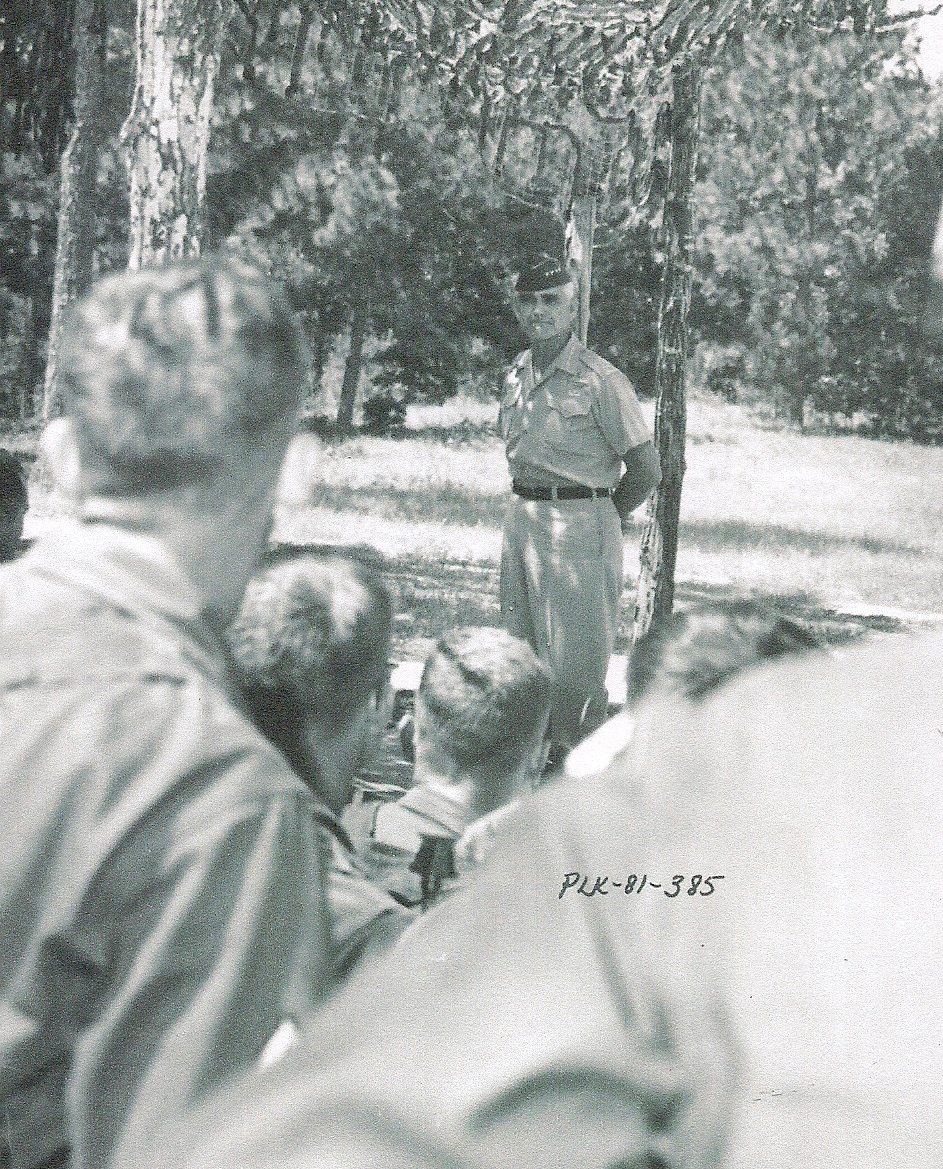GENERAL WESTMORELAND VISITS TIGER RIDGE
BY RICKEY ROBERTSON
Throughout the history of the United States our country has fought many wars and has fought with their allies in several more. One of the longest and hardest fought wars involving the United States was the Vietnam War. During this lengthy war over 58,000 American service men and women were killed, with thousands wounded and crippled. But the Military Assistance Command Vietnam (MACV) and American forces in Vietnam were commanded by a very able and accomplished officer, General William C. Westmoreland.
William Westmoreland was born in 1914 in South Carolina. He attended The Citadel for one year, then in 1932 he received an appointment to West Point. At West Point he was an outstanding cadet, and due to his military proficiency he graduated as First Captain of Cadets. And one of his friends and fellow classmates was Creighton Abrams. After his graduation he was appointed an artillery officer and commanded artillery units, but when World War II came he served in combat in Tunisia, Sicily, France, and Germany and achieved the temporary rank of Colonel as Chief of Staff of the 9th Infantry Division. After World War II he completed the Airborne School at Ft. Benning and was assigned to the 82nd Airborne Division where he commanded the 504th Parachute Infantry Regiment. And when the Korean War was raging, he commanded the 187th Airborne Regimental Combat Team in combat against the Chinese Communist forces.
But Westmoreland's greatest command was to come in 1964 when Robert McNamara, Secretary of Defense, told President Lyndon Johnson that Westmoreland was the man to send to Vietnam because he "was the best we have without question." Due to the start of the American involvement and support of the fledgling South Vietnamese government, General Westmoreland arrived in South Vietnam in early 1964. General Westmoreland and the American troops under his command were to attack and achieve victory over the Viet Cong and North Vietnamese Army that was attempting to overthrow and destroy the South Vietnamese government. One thing General Westmoreland wanted was to win a big victory in Vietnam with minimal casualties. But as the war progressed, the casualties mounted as American units did achieve victories in battles such as the Ia Drang Valley and the 1968 Tet Offensive. During General Westmoreland's stint as commander in Vietnam, the total United States troop strength reached nearly 535,000. Westmoreland led American troops for nearly four years before he was promoted to Chief of Staff of the United States Army in 1968. His replacement in Vietnam was his fellow classmate from West Point days, General Creighton Abrams.
General Westmoreland was Army Chief of Staff from 1968 until 1972. During his tenure as Chief of Staff he came to Fort Polk, La. in September 1968 and inspected the training facilities located there. Fort Polk was known as the largest infantry training center in the U.S. Army and for "Tiger Land," the most realistic training areas made up of Vietnamese style training village sites. Tiger Land was composed of three large different areas. Training facilities were on North Fort Polk, at Tiger Ridge located on Peason Ridge, and the Horse's Head Area located in the Kisatchie National Forest near Kisatchie, Louisiana. Every Friday over 2000 men graduated from Advanced Infantry Training (AIT). Due to the extreme need for infantry replacements in Vietnam, out of every 100 man company 98 men would receive orders telling them "Next Stop Vietnam"!
Tiger Ridge, located on Peason Ridge Military Reservation, was a large fortified Vietnamese style village. It was surrounded by a large berm covered with sharpened punji sticks , had many hootches inside the berm, had tunnels running from hootch to hootch and even outside the berm, and had bunkers and fighting positions all along the perimeter. Training companies swept through Tiger Ridge searching for Vietcong or North Vietnamese soldiers and at night the company set in to defend the village and they would be attacked by these enemy units during the night. When General Westmoreland arrived at Fort Polk he toured the Tiger Ridge training site and spoke with recruits going through this realistic training. General Westmoreland was very impressed with the training being conducted at Fort Polk and he stated "Fort Polk has a fine reputation in Vietnam and it certainly has a fine reputation with me. The many hundreds of young men I have talked to who received basic combat training in the United States, plenty of whom were trained at Fort Polk, spoke very highly of training in general, but those trained at Fort Polk were particularly complimentary as to the realism of the training." This realistic training helped to save the lives of untold numbers of American soldiers when they arrived in Vietnam.
General Westmoreland retired from active duty in 1972 and he ran unsuccessfully for Governor of his home state of South Carolina in 1974. Even in retirement General Westmoreland always remembered the Vietnam veterans who had served under his command. When American troops returned from Vietnam the country was in great turmoil and they would be called baby killers and were spat upon. They received no welcome home as other veterans had received returning from previous wars. But General Westmoreland in 1986 attended the Chicago Vietnam Veterans Parade as grand marshal. This huge parade was attended by over 200,000 Vietnam veterans and there were more than half a million spectators. Slowly the rift between the Vietnam veterans and the public began to be repaired. And General Westmoreland did his part on behalf of his former soldiers. Always a soldier, General Westmoreland died on July 18, 2005 at the age of 91 years and he was buried with full military honors in the West Point Cemetery at the U.S. Military Academy located there.
General Westmoreland was yet another famous military officer who came and visited West Central Louisiana. This area since 1941 has been noted for its realistic military training and continues to train units at the Joint Readiness Training Center located at Fort Polk. As you read of General Westmoreland's visit, I ask each reader to do something for General Westmoreland's Vietnam Era soldiers. When you meet one of these brave men and women who fought with courage and honor, thank them for their service, but most of all give them the two words they have never properly received from the American public: "Welcome Home."
.jpg)
.jpg)
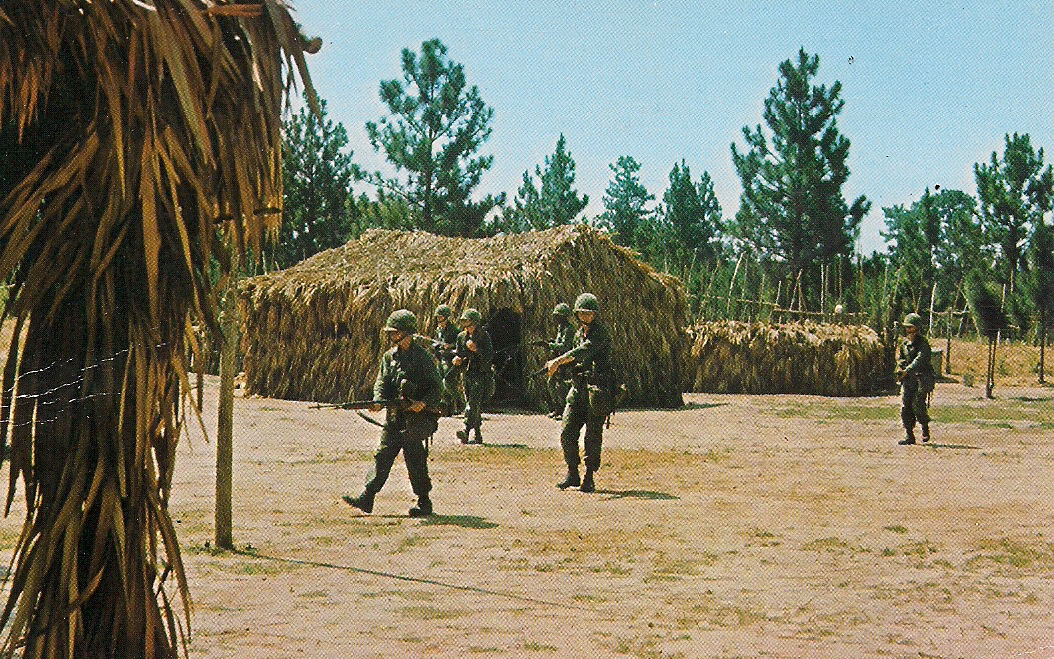
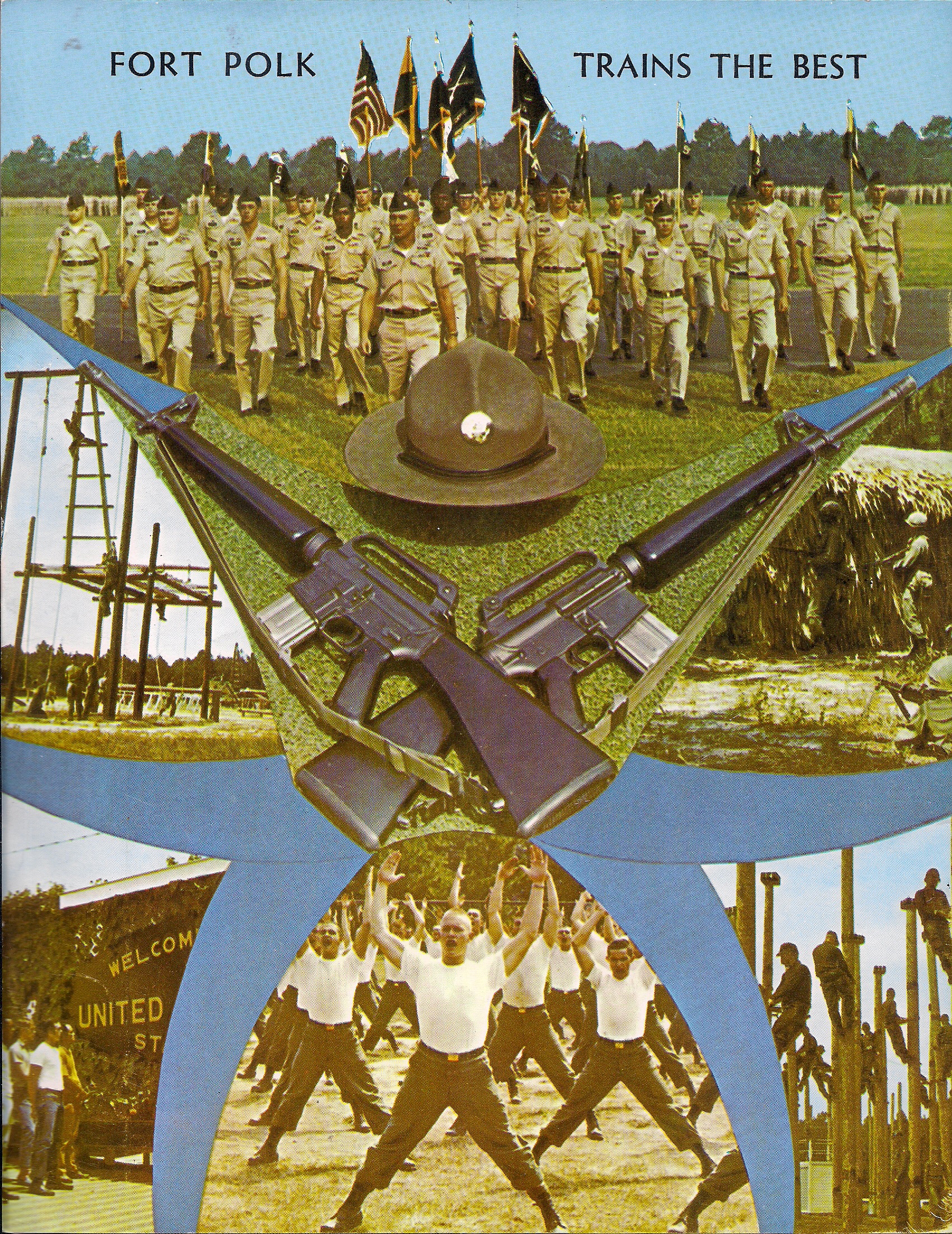
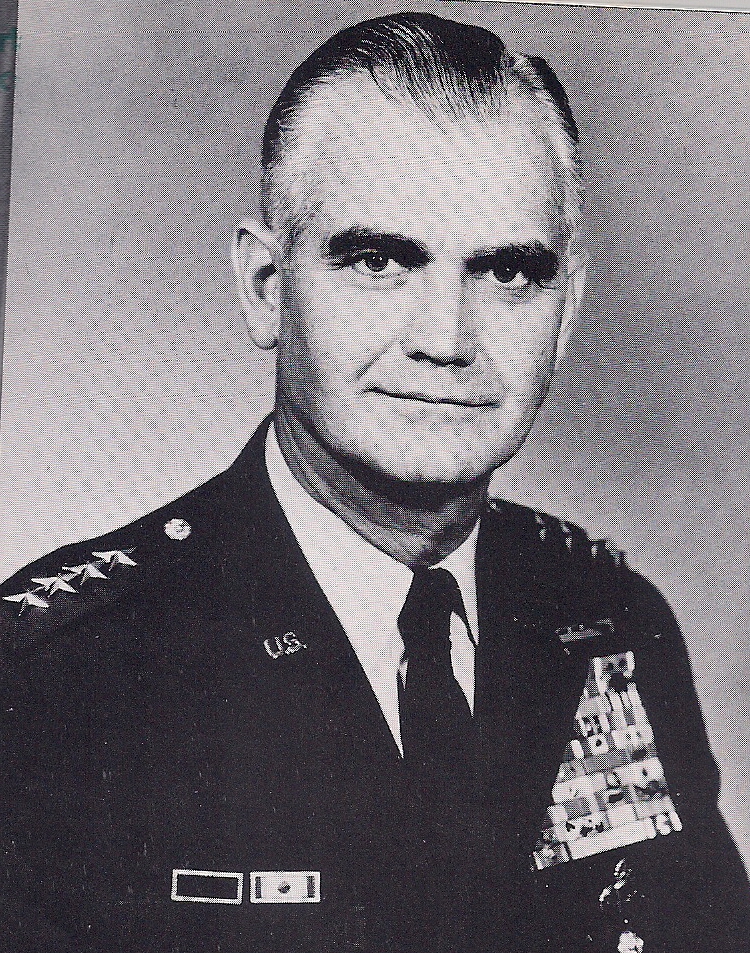
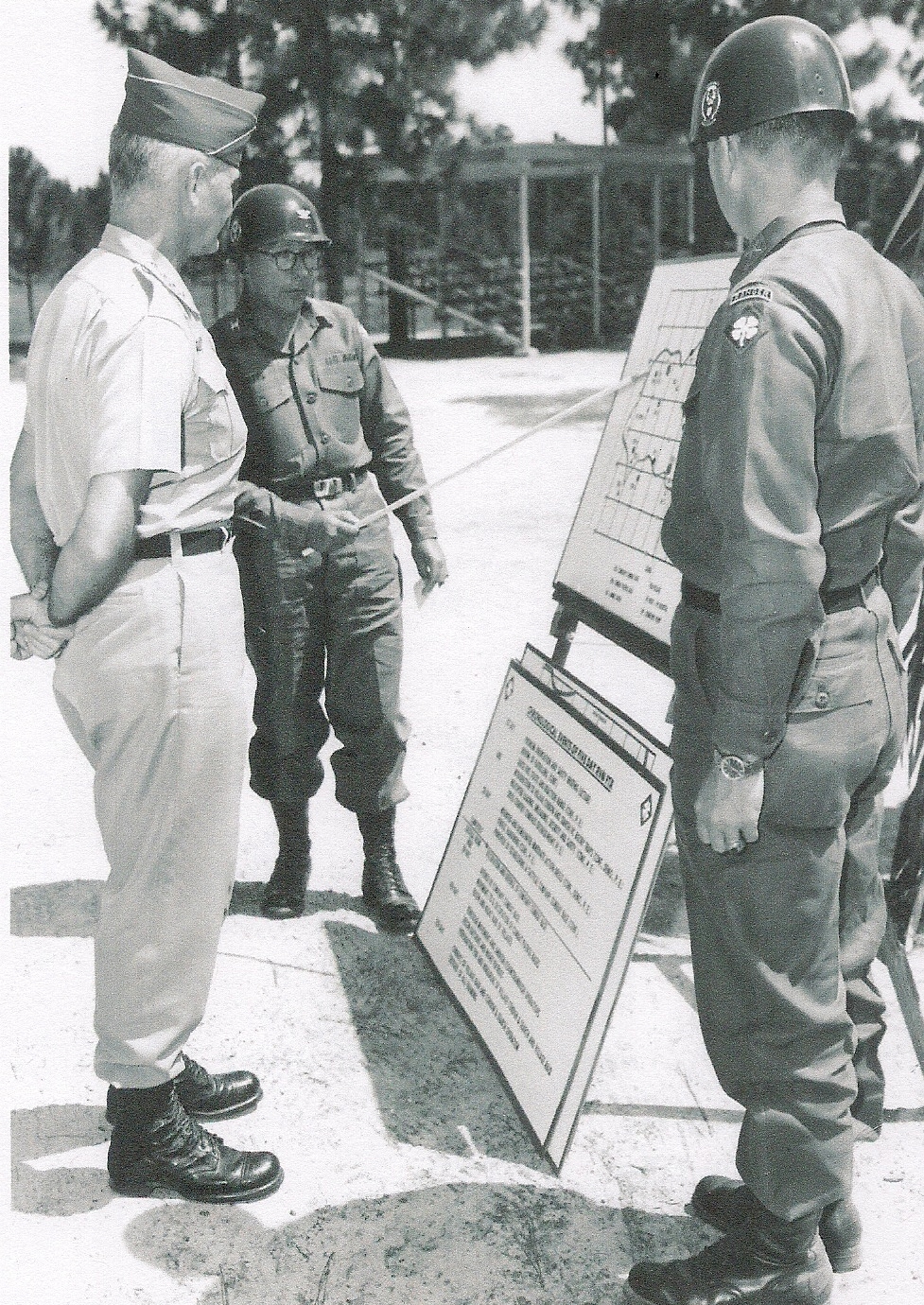
General Westmoreland being briefed by Training Brigade Officers at the Tiger Ridge Village Site in 1968. (US Army Photo)
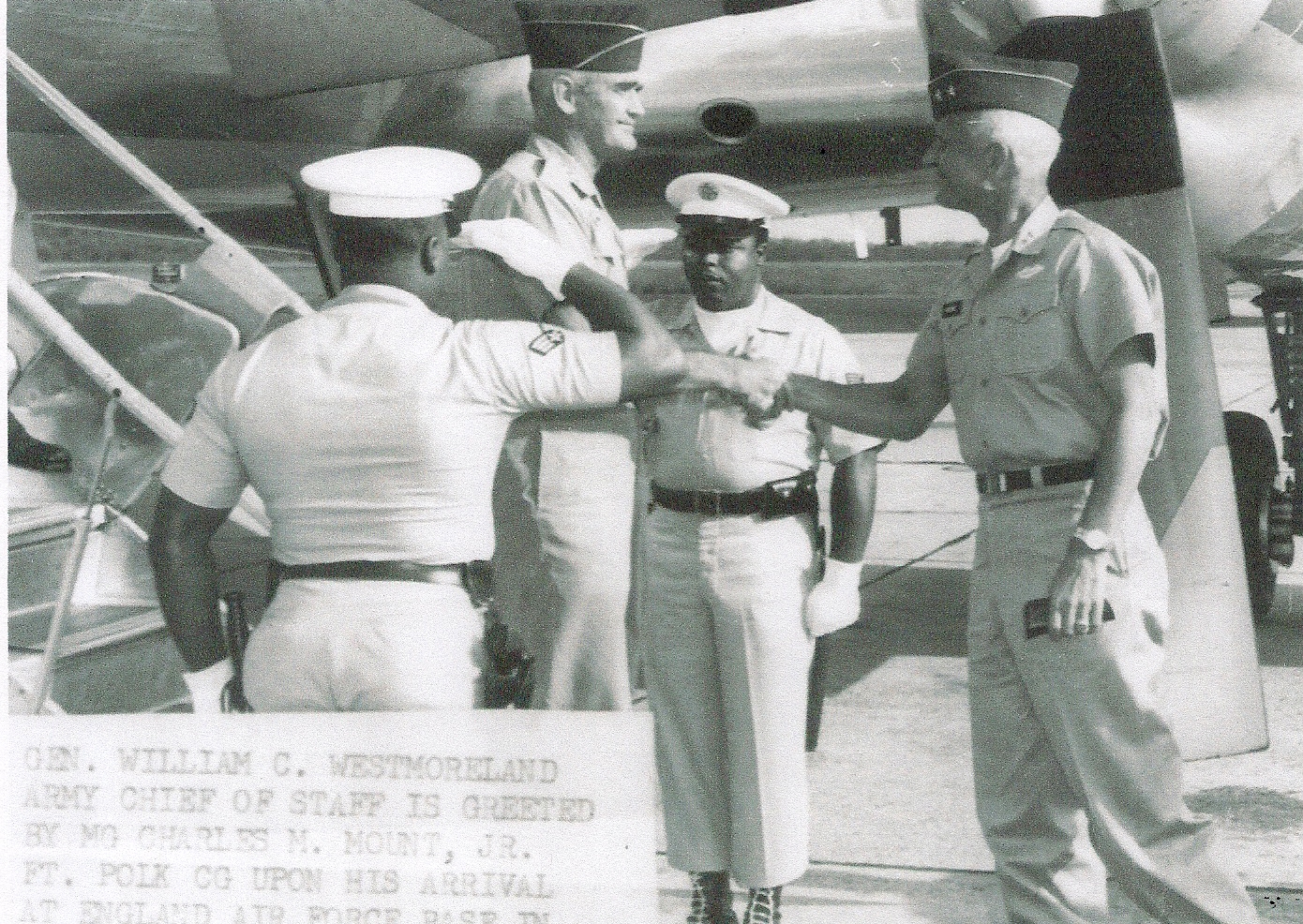
General Westmoreland arrives at England Air Force Base Alexandria, La and is met by Major General Charles Mount, commanding general of Fort Polk in September 1968. (US Army Photo)
